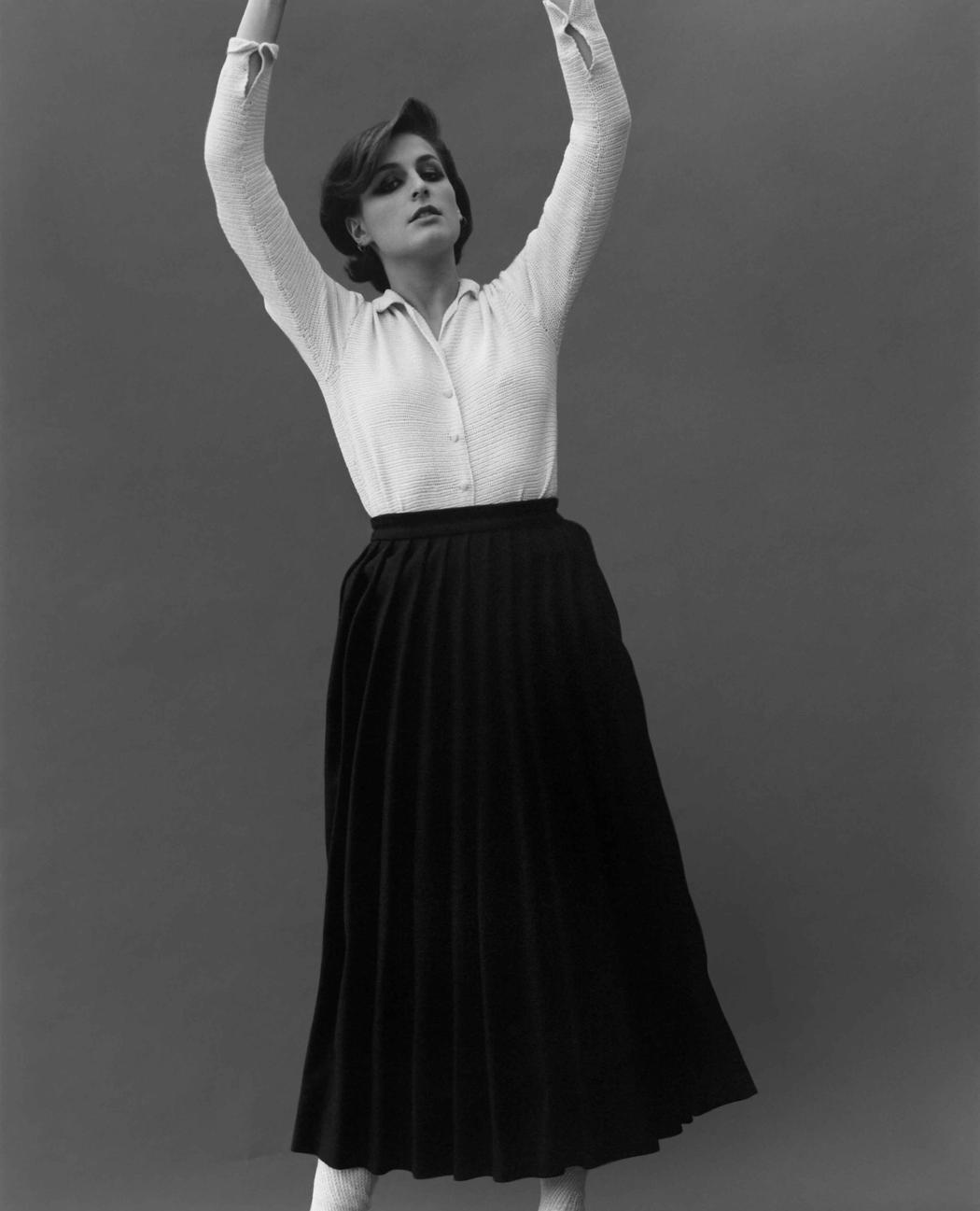Gabriele Skucas’s MA Fashion collection was outstanding, both for having won the L’Oréal Professionnel Award, and for the fact that it was made of almost identical garments. A collection of yellowing cream shirts and long black skirts, any attention paid towards her exquisitely crafted garments — one skirt alone took a month to crochet — was quickly swallowed by a stronger, darker mood that the repetition evoked.
Gabriele was born in Lithuania and raised in Chicago. She attended Central Saint Martins for a year abroad, but never went back home. Enticed by CSM’s teaching method and freedom, she transferred her studies there, staying to complete her BA and MA. The skill that would become her speciality was taught to Gabriele by her mother, one day while bored at the beach. “Crochet is like magic. You’re sitting there on the sand, without any machines, or any technology, making something, growing something.”
Her designs show an incredible commitment to detail. Only someone who holds precision and perfection in such high regard is able to spend a month crocheting a skirt. “It’s a nice story, and a true story,” she says, “but the point is that it is the easiest thing I could have done. I hate anything going wrong. Sticking to what I know, a single crochet stitch, a single pleated skirt, a single cream shirt, I felt very safe.” While many are concerned with creating an aura of ease, humour and success, Gabriele is transparent, earnest and humble. In regards to her lack of social media presence she says, “I think in general I am a very nervous person. I think: who cares, who cares about me? I am very nervous about what I would put on my Instagram, whether it would be exactly representative of me.”
“I was most interested in looking at myself and my desires — both what I say out loud, but more importantly, my secret, selfish and embarrassing wants.”
Gabriele’s commitment is to the wearer of her designs. “It is most important to me that regardless of the clothing, what I make should be beautiful on a woman. My strongest goal is that the wearer of the garment will feel beautiful.” She’s also interested in giving a public reckoning of our private wants, those that feel too frivolous to share. “I was most interested in looking at myself and my desires — both what I say out loud, but more importantly, my secret, selfish and embarrassing wants. I never wore a school uniform in America. The rich private school girls, the Catholic girls, wore uniforms. These girls were always better than me in my eyes. They didn’t seem to have the same flaws that I had. So maybe this is my way to create one of them, of my own. If I can’t be her, I can make her. What I am happiest about with this collection is that I feel I have physical proof of myself as a 25-year-old girl. That is a girl who is still insecure, likes safety, likes plainness and routine. I love secrets. I love other people’s drama. I hate my own drama. I am very defensive.”
When Gabriele says this, the school-girl evocations in her collection are immediately obvious. It’s easy to get wrapped up in its other layers and miss that connection — the poetry of the heavy wool, the slightly suffocating neckline, the eerie yellow of the tops. Brits will always have a less romanticised recollection of school uniforms than fellow Americans. Memories of cruel teachers, embarrassingly bright jumpers and the mean girls who knew how to roll their skirts up better, etched into our minds. Gabriele has opposite connotations, of course. “I always felt like those girls were special or good,” she says. “It was just this immediate thing of always looking pretty. It was something I always envied because I went to a public school and didn’t have it.”
The collection’s overarching rigidness is at its most cohesive with Gabriele in this context of wanting. “It’s the suffocation of expectation,” she explains. “I want to appear good, nice, perfect, which is why I think I was also drawn to this whole schoolgirl aspect as a culture: the abiding by something, the restricting something. It was a really interesting thing for me as a designer, to pick something that already has such strong associations.”
Given the intensity of thought that Gabriele poured into her MA Collection, she is surprisingly laid-back regarding what happens next. “Finding a job in design is the next step, or a sponsorship to start my own small collection perhaps. Just making an income in design.” She’s pragmatic, focused, not ready to rest on her laurels for winning the L’Oréal Prize with her enigmatic, daring final collection. She adds, “I’m open to whatever comes.”

